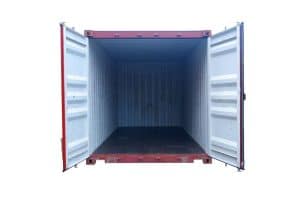Modern innovations have allowed us to reimagine how we approach sustainability and farming. One such innovation is repurposing shipping containers into year-round greenhouses. These containers, usually associated with cargo and transportation, have the potential to revolutionize urban agriculture and sustainable practices. Read on to discover the wonders of this incredible transformation.
Benefits of Using a Shipping Container as a Greenhouse
Easy Conversion
Shipping containers are ready-made structures, which means the foundation for your greenhouse is already in place. With a few adjustments, such as cutting windows for sunlight and ventilation, adding insulation, and perhaps some shelving, your container can be quickly transformed. Given their standard size and structure, finding design ideas and tutorials to guide the conversion process is relatively simple.
Low Maintenance
Shipping containers are designed to withstand harsh weather conditions, whether at sea or in port, making them highly durable and resilient. Using them as a greenhouse means you’ll have a structure that can handle heavy winds, rain, and even snow. They’re constructed from steel, which doesn’t rot or degrade quickly. This means fewer repairs and a longer lifespan than traditional wood or plastic greenhouses.
Farm All Year-Round
One of the significant advantages of converting a shipping container into a greenhouse is the ability to control the climate within, allowing for farming throughout the year. Adding heaters during colder months and utilizing the container’s insulation properties makes maintaining a consistent temperature feasible. This consistency provides an environment where plants can thrive regardless of external conditions.
You Can Be Self Sustainable
A shipping container greenhouse opens doors to producing a consistent supply of fresh produce for you and your family, and no more relying solely on supermarket greens that might have traveled thousands of miles. It’s a step closer to food independence, where you control what you grow, ensuring it’s free from harmful chemicals and harvested at its freshest.
How To Get Started
- Research & Planning: Before purchasing, thoroughly research the type of plants you want to grow and the required climate conditions. This will determine the modifications needed for the container.
- Purchase a Shipping Container: Seek out sellers or companies that provide shipping containers. Look for ones in good condition without significant dents or rust.
- Select A Location: The site should have sufficient sunlight exposure and easy accessibility, preferably close to a water source.
- Modify & Design: Start with the design process once you have your container. Cut out spaces for windows or consider adding a roof made of transparent material for sunlight. Install shelves, hydroponic systems, or traditional soil beds based on your preference.
- Monitor & Adjust: Once your plants are in, monitor them. Adjust the internal conditions as necessary using heaters, fans, or humidifiers.
- Enjoy Your Produce: As your plants grow and bear fruit, enjoy consuming fresh produce grown by your hands in your unique, sustainable setup.
Carolina Containers
Are you interested in making this vision a reality? Carolina Containers is your go-to source for high-quality shipping containers. Whether you’re looking to start small or aim for a more extensive setup, we have options that will fit your requirements. Don’t wait any longer – leap into sustainable living today. With Carolina Containers, your dream of a year-round greenhouse is closer than you think. Contact us at 919-562-9187.
The post Turn A Shipping Container into a Year-Round Greenhouse first appeared on Carolina Containers.

 Shipping containers are built with resilience, designed to brave extreme conditions and protect their contents. To further bolster their lifespan, they require regular maintenance. This promises financial savings in the long run and ensures the safety and security of stored items. Familiarizing oneself with the signs of wear and tear, both externally and internally, can help prioritize repairs and prevent minor concerns from escalating into major setbacks.
Shipping containers are built with resilience, designed to brave extreme conditions and protect their contents. To further bolster their lifespan, they require regular maintenance. This promises financial savings in the long run and ensures the safety and security of stored items. Familiarizing oneself with the signs of wear and tear, both externally and internally, can help prioritize repairs and prevent minor concerns from escalating into major setbacks.